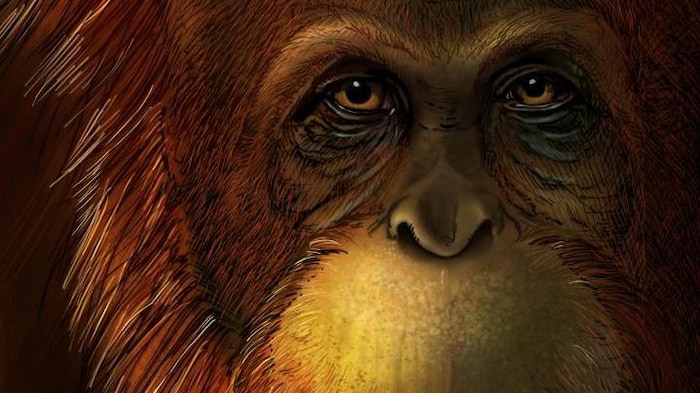Open in full screen mode Artistic illustration of a Gigantopithecus blacki Agence France-Presse Standing three meters tall, the Gigantopithecus monkey flourished for a long time in the forests of Asia before being wiped off the face of the Earth more than 200,000 years ago, due to lack of knowledge. adapt to a changing environment, according to a study published in the journal Nature (New window) (in English).
A group of Gigantopithecus blacki in a forest in southern China. (Artistic illustration)
The extinction of the largest primate of all time – 3 meters, 200 to 300 kilos – was the death of the largest primate of all time. one of the great enigmas of paleontology since the discovery of the first traces of the beast in the 1930s.
A German paleontologist then came across a dragon's tooth at an apothecary in Hong Kong. It was three to four times larger than that of any great ape. It intrigued him and that’s where the research began, Renaud Joannes-Boyau, professor at Southern Cross University in Australia, told AFP. ;one of the authors of the study.
A fossilized mandible of Gigantopithecus blacki.
Gigantopithecus blacki left behind only a few jaws and teeth, found by the hundreds in caves in Guangxi province, in southern China.
But despite ten years of excavations, scientists could not determine when and why the species had become extinct, explains the professor Yingqi Zhang of the Institute of Paleontology of the Chinese Academy of Sciences, co-author of the study.
Loading
COVID-19 and the “ storm of respiratory viruses »
ELSEWHERE ON INFO: COVID-19 and the “respiratory virus storm”
Rather than investigating site by site, a team of Chinese, Australian and Americans worked on a set of 22 caves in China – some of which had never before been excavated – containing fossilized teeth: from the oldest, 2 million years old, to the most recent, approximately 250,000 years ago.
They combined six different dating methods, including the analysis of sediments by luminescence, which allows us to know when these deposits were last exposed in daylight. But also the dating of pollens, valuable clues to the evolution of vegetation, all in order to have a complete chronology of the environment of each site, including those where Gigantopithecus blacki< /em>no longer appeared, explains Professor Joannes-Boyau, expert in geochemistry.
Their results made it possible to determine an extinction window of the species: between 295,000 and 215,000 years ago. Which corresponds to a vast period of glacial cycles known as the Middle Pleistocene, where the planet experienced global cooling.
Consequence: in the lush tropical forests where the colossus thrived, more contrasting seasons transformed the vegetation and led to periods of fruit scarcity, says researcher Kira Westaway of Macquarie University in Australia, also a co-author. p>
Gigantopithecus blacki, which was moving on the ground, saw its foraging area become sparse and fell back on bark and twigs. He made a huge mistake by specializing in these emergency foods, which are very fibrous and less nutritious, explains Yingqi Zhang in an interview with AFP in Beijing.
Its too large size slowed down the agility necessary to find more varied resources. This handicap has only gotten worse because surprisingly, his size has increased over time, notes Kira Westaway.
Suffering from chronic, long-term stress – which can be seen in the teeth – the population gradually declined and the species ended up becoming extinct.
Conversely, its orangutan contemporaries of the species Pongo weidenreichi, close to the Gigantopithecus , have persisted: smaller, more agile, they were able to move in the canopy to gather a variety of foods (leaves, nuts, insects, small mammals, etc.). A saving versatility which grew stronger as their size decreased over time.
The gigantopithecus was not the only animal of Pleistocene megafauna to disappear. According to Kira Westaway, exploring these unresolved extinctions allows us to understand the mechanisms of resilience in large animals, in the past and in the future, while the threat of a sixth mass extinction since the appearance of the Earth looms. alive.

